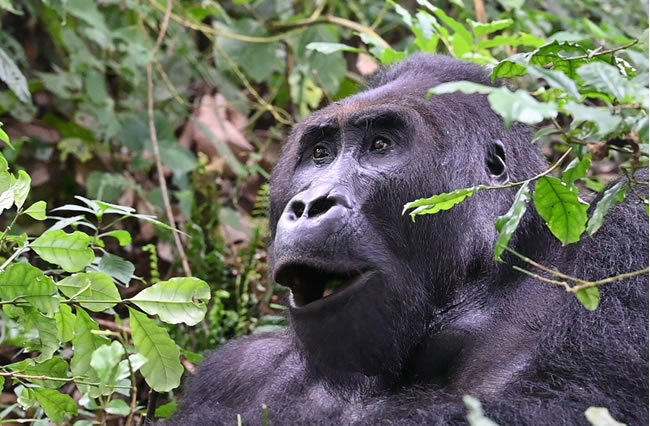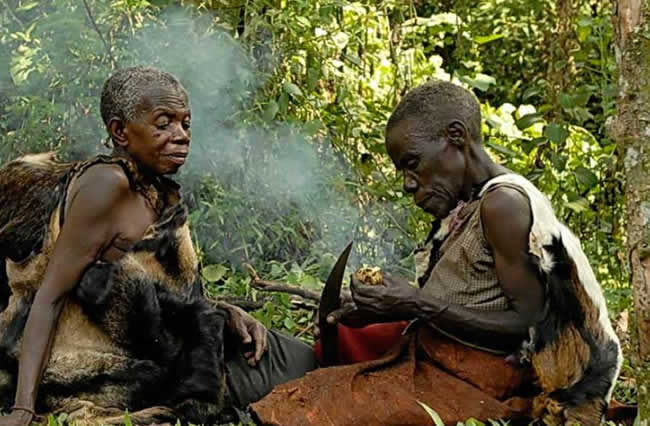Bwindi Impenetrable is amongst the most famous and visited national parks in Africa and this is attributed to its being host to over half of the magnificent but endangered mountain gorillas. Although gorillas are the main attractions to this destination, the park is also rich in biodiversity because it’s one of the few places on earth to have survived the last ice age. These resulted in harboring intriguing species like elephants, buffalo, various small antelope, chimpanzee, bird, and plant species.
The park encompasses over 321sq km most of which is covered by thick almost unnavigable montane forest. The park was gazetted in 1991 to protect the endangered mountain gorillas that were nearly wiped out by poachers for illegal wild meat and loss of habitat by encroachers. The park is recognized as a UNESCO heritage site and has seen the number of gorillas multiplying over the years due to terrific conservation efforts by bodies like the Uganda Wildlife Authority a number of non-profit conservation organizations.

Bwindi national park runs along the western arm of the rift valley in the southwestern district of Kanungu near the Democratic Republic of Congo and the Virunga Mountains in the south. The park is allocated into four sectors of Rushaga, Nkuringo, Buhoma, and Ruhija where you can have the best gorilla tracking in the region. The Buhoma sector was the first sector in Bwindi and most famous amongst all the four sectors.
WHAT TO DO IN BWINDI IMPENETRABLE NATIONAL PARK?
Visitors to Bwindi have a couple of interesting activities they can engage in that guarantee extraordinary memories.
Gorilla trekking.

Gorilla trekking is the top renowned activity that attracts countless visitors to this haven to experience a one-on-one encounter with the last remaining mountain gorillas on earth. This experience is described by many as one of the grand memories any human can have before leaving earth.
Batwa culture tour.

In addition to tracking gorillas, guests can undertake other fascinating activities like the Bwata community encounter. These are the original occupants of the forest and guests have a chance to have a glimpse of how life was before from fruit gathering, hunting, and social life.
You can have other primate viewings like baboons and monkeys or remarkable bird watching where you can record 23 of the Albertine rift endemics like the African Green Broadbill amongst others like nature walks.
Accessing Bwindi impenetrable national park.
The park can be accessed by air or road using different routes available. By air, there are scheduled flights to Kisoro and Kihiihi from Entebbe airport. Flights to Kihiihi are scheduled for both morning and evening while for Kisoro it’s only in the morning.
By road, visitors can use the Kampala to Kabale and then connect to Kanungu district in the Buhoma sector of the park. This route usually takes about 10 to 11 hours. Another option is the Kampala to Ntungamo, Rukungiri and finally Buhoma sector. This is regarded as the most direct of all routes and fastest ways to reach the park from Kampala.
Best time to visit Bwindi.
The park can be visited throughout the whole year round just like most of Uganda. Uganda experiences two seasons the rainy season and the sunny season. With both seasons having their advantages. The sunny season is the most recommended time to visit since trails are more navigable and less slippery plus gorillas can be easily tracked. This period is from December to early February and then June to September.
The rainy season kicks off from early March to May and between October and November. During this period, tracks are more slippery and peskier insects like mosquitoes but it comes with the advantages of discounted rates on tickets, accommodation and fewer visitors in the park.
When planning to do gorilla tracking in a destination and still participate in various activities [hiking, bird watching, or cultural experiences] in the same vicinity, Bwindi is the perfect park to visit and be guaranteed to have a memorable adventure of your life.

